Building Your Own Axe Throwing Lanes: What You Need to Know
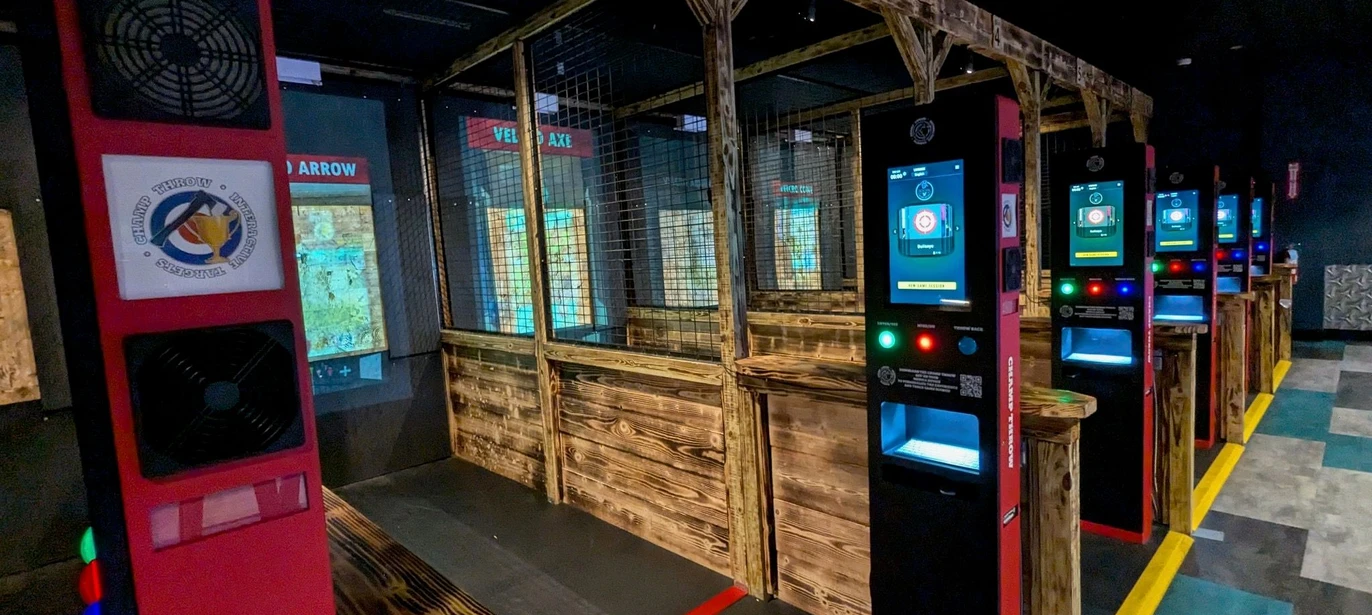
From safety specs to material choices, here’s what you need to know before you start cutting lumber.
Space Requirements: Start with the Room
Before anything else, make sure your space can safely accommodate axe throwing. Each lane should be between 5.5 to 6 feet wide and 13 to 14 feet long. A minimum ceiling height of 12 feet is strongly recommended—this isn’t just about comfort, it’s about safety. Even controlled throws can arc higher than expected.
If you’re building multiple lanes side-by-side, add sturdy dividers between them. These can be steel frames or solid wood panels and should extend from floor to ceiling. Make sure there’s enough walking space behind the throwers and a clear viewing area for spectators that keeps them safely out of range.

Target Construction: Build it Right, Build it Safe
A typical lane uses a layered target wall with a sturdy backboard (like OSB or plywood), then vertical target boards mounted to the surface. The go-to boards for most venues are 2x10s, cut to 4 feet in length. Use poplar or cottonwood if you can find it—they're durable, easy to work with, and make sticking axes feel effortless.
Avoid oak or cedar; they’re either too hard or too splintery. And skip plywood as a throwing surface—it doesn’t hold up and can be dangerous.
Many builders include header and footer boards (horizontal 2x10s at the top and bottom) to help frame the vertical planks and make swapping boards easier. The bottom edge of your scoring target should sit around 36 inches from the floor to keep the gameplay consistent and comfortable.
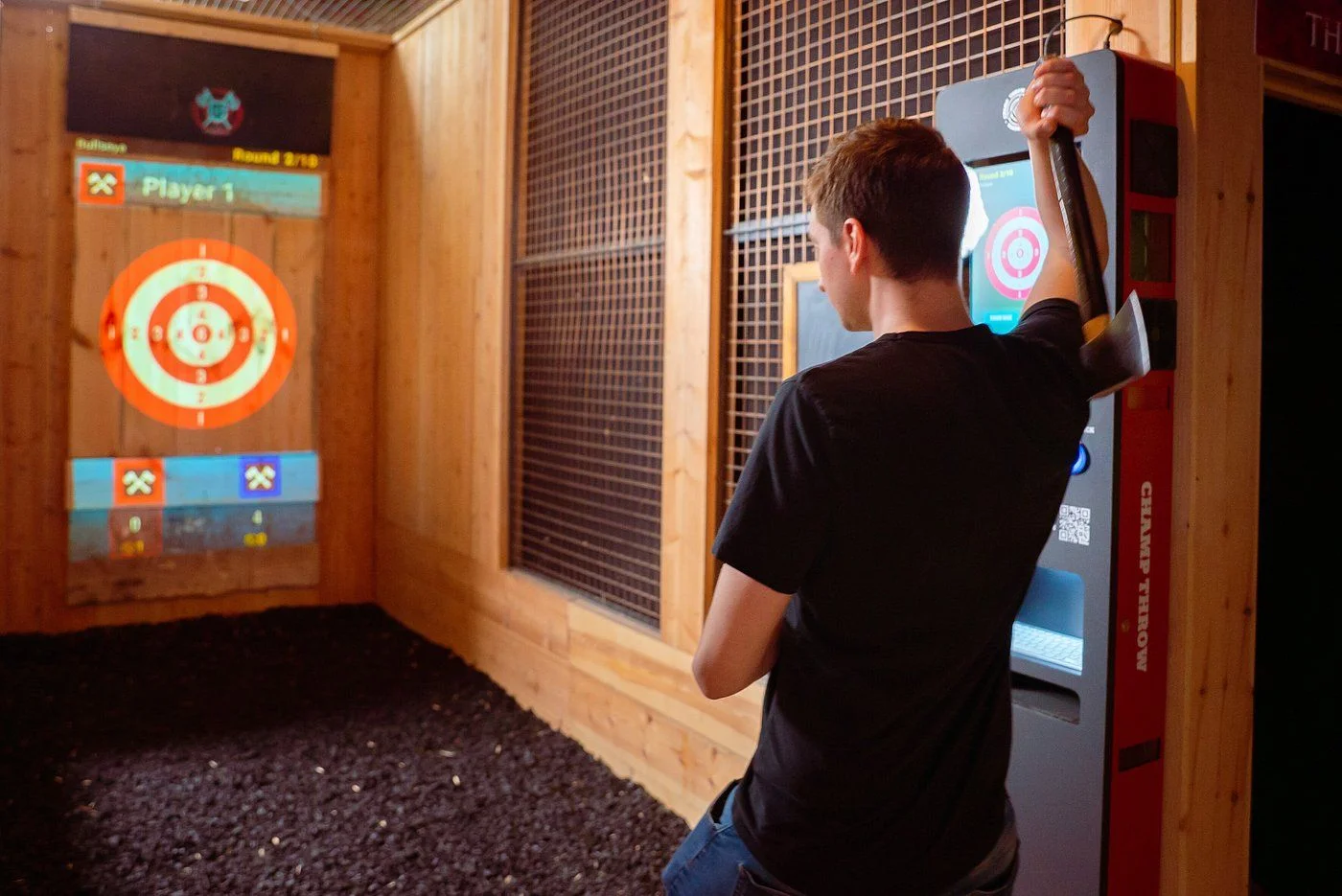
End Grain Targets: Worth the Investment?
End grain targets—made from stacked blocks with the wood grain facing outward—are growing in popularity. They self-heal better, reduce bounce-backs, and provide a cleaner aesthetic. They're also a great choice if you're planning to use projection targets or precision scoring systems, since the smooth surface helps with visibility and accuracy.
While more labor-intensive to build, end grain targets can last significantly longer and may be more cost-effective over time.
Power, Lighting, and Tech
Even if you’re starting analog, plan ahead. Many venues eventually add scoring systems, timers, or digital enhancements—so you’ll want at least one outlet per lane and internet access nearby. This opens the door for interactive experiences, app-based scoring, or projection-based gameplay down the line, even if you don’t install them right away.
Use warm but even lighting—enough to clearly see the target without glare or shadow. If you're projecting anything on the board (such as scoring zones or animations), avoid overhead lights that wash out the image.

Tips from the Field
- Spray water on your boards regularly to reduce splitting and extend board life.
- Flip and rotate your 2x10s often to even out wear and get more throws per board.
- Use cages or barriers behind the thrower area to prevent bounce-backs or stray throws from causing damage or injury.
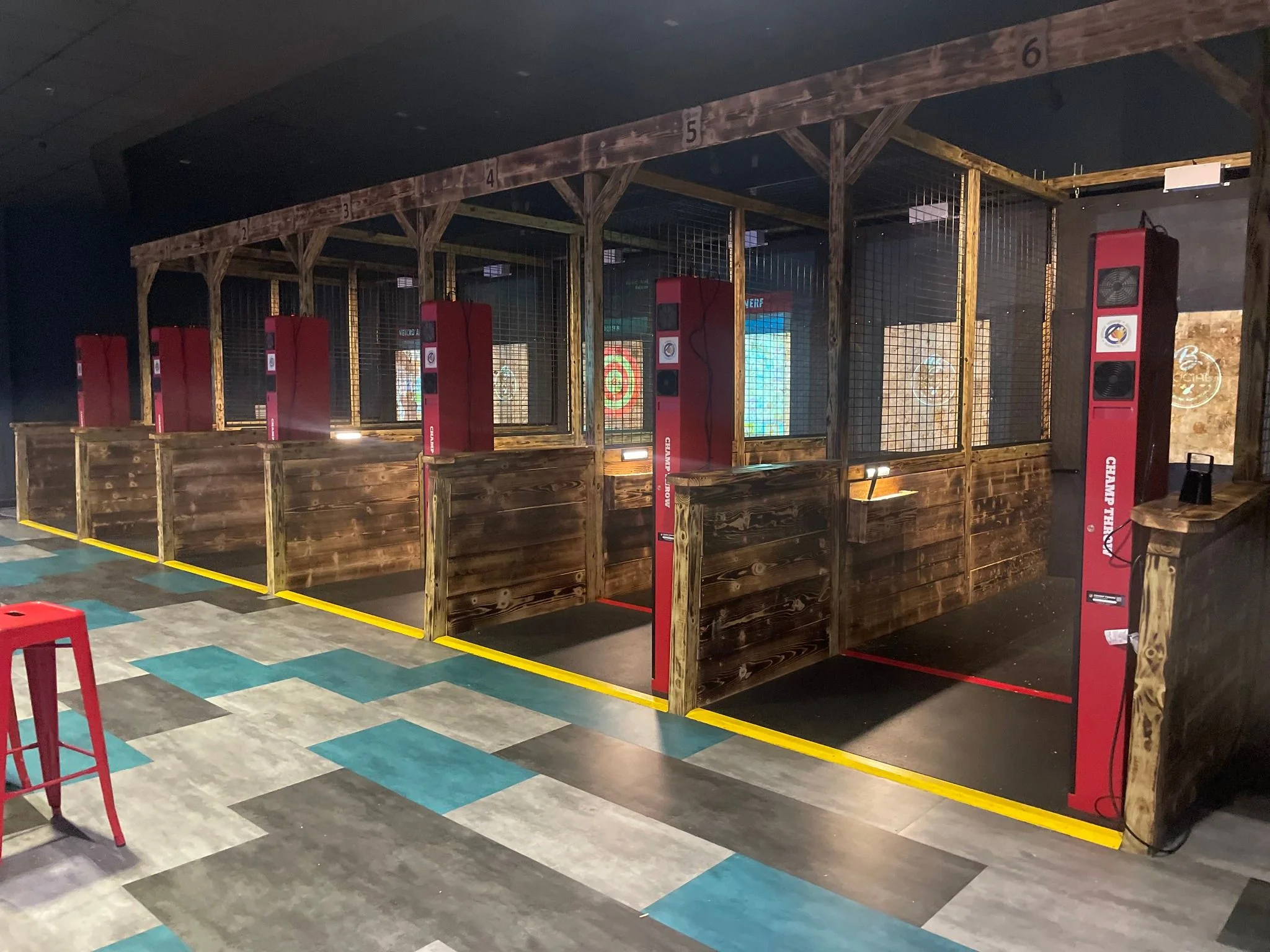
Final Thoughts
Building your own axe throwing lanes is absolutely doable, and with the right materials and layout, they’ll hold up to thousands of throws. Stick to the right specs, invest in good wood, and keep long-term flexibility in mind. Whether you're hosting league nights, casual players, or family groups, the foundation of your experience starts with how the lanes are built.
If you’re working with a specific footprint or unique venue layout, don’t hesitate to consult professionals—or others in the community—for input. A little planning upfront can save a lot of headache down the line.
Other blog posts
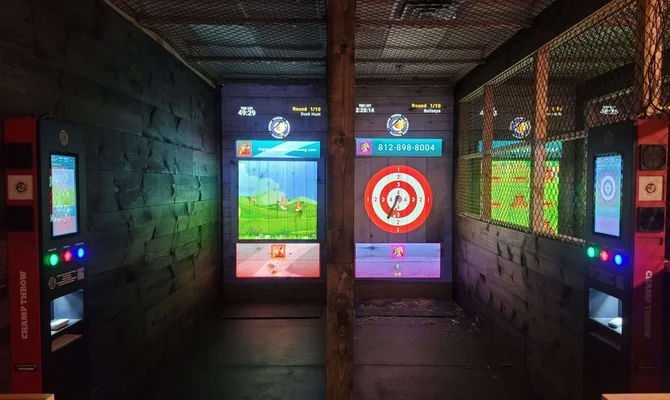
Axe throwing has carved out its place as one of America’s fastest-growing entertainment trends. Once associated with rugged outdoor competitions, it’s now a polished, exciting, and accessible activity popping up in bars, arcades, family entertainment centers (FECs), and even corporate events. And behind its rapid rise is a deeper truth: people are craving experiences that feel active, social, and memorable. So what makes axe throwing such a powerful attraction—and why are forward-thinking venue owners jumping in?
We’re thrilled to announce the launch of our latest game, Block Rush, now avilable cross all Champ Throw Interactive systems! 🎯🔥 Get ready for an all-new axe throwing experience where precision meets pure chaos — and every throw has the power to change the battlefield.
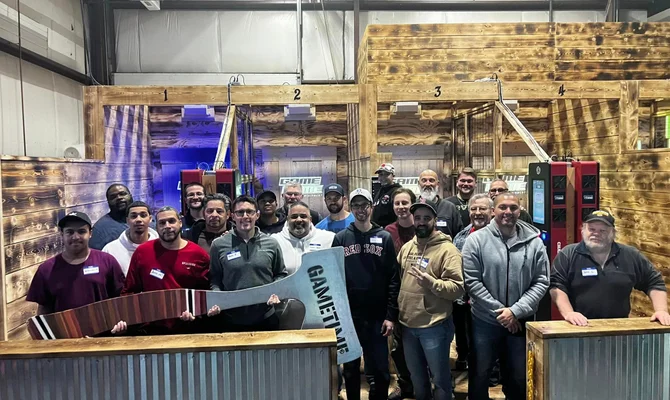
Looking for a Team-Building Experience That Actually Works? Forget awkward icebreakers and tired trust falls. Today’s companies want active, energizing, and unforgettable experiences that bring teams together and create real connections.